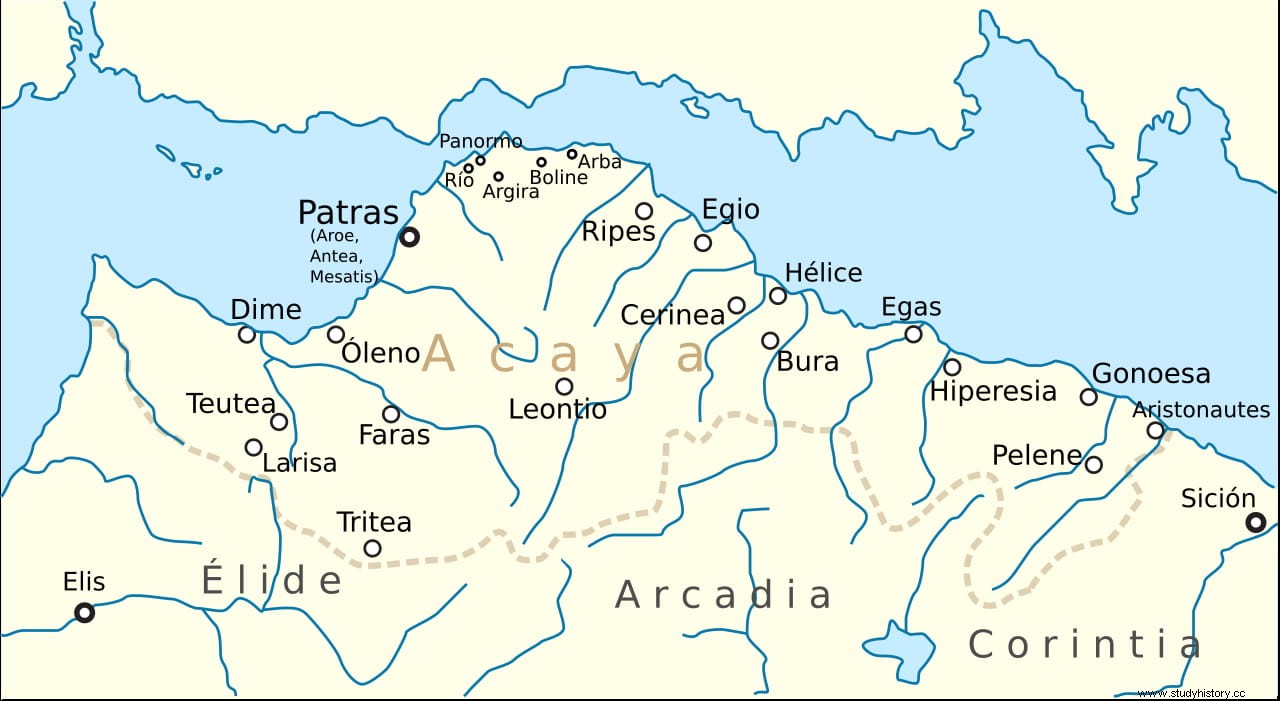The first period of excavations this year on the Trapeza plateau, eight kilometers southwest of Aegean in ancient Greek Achaia, has concluded, bringing to light, among other things, valuable sets of grave goods and three bronze swords. The place is identified with Ripes, a city that flourished in early historical times and participated in the colonization, founding Crotona (the city with the most Olympic winners in the stadion ) in Magna Graecia.
The excavation focused on the Mycenaean necropolis, which develops on the southwestern slope of the plateau and is located on the ancient road that led to the acropolis of the historical period. The tombs are chamber-shaped and dug into the soft, sandy subsoil. Its use was long and intensive, already during the pre-Hellenic period and the heyday of the great centers of Mycenae, Tiryns and Pylos. An important reuse of the tombs dates back to the 12th century BC, when they were reopened again and again, becoming at the same time a place for the performance of funerary customs and complex ritual practices until the end of the Bronze Age, in the 11th century BC

The excavation of the necropolis yielded valuable sets of grave goods consisting of ceramic pieces, numerous stone seals and all kinds of beads and shells of various materials -glass, earthenware, gold, carnelian, mineral glass- that make up necklaces and elaborate jewelry, as well as gold pendants in the shape of buccaneers, which refer to trade relations with the eastern Aegean and Cyprus.
The tomb chamber identified as number 8, in the shape of a rectangular parallelogram, which was investigated this year, showed a complex stratigraphy. In the first layer of burials from the 12th century B.C. three burials crowned with false amphorae were investigated. The bones of the oldest burials had been removed and placed with respect and great care in two overlapping piles at the bottom of the chamber in contact with the walls of the tomb. On top of these excavations, three carved clay alabasters and an amphora date these first burials to the 14th century B.C.

Among the bones and grave goods that accompanied these early burials were glass and carnelian beads, a clay statuette of a horse, and an exceptionally well-preserved bronze sword. Two other intact bronze swords were found at the base of the pile of bones, also retaining part of their wooden hilts. The three swords belong to different types, corresponding to the Sandars D typology. (crossed swords) and Sandars E (T-hilt swords), and date to the height of the palace period of the Mycenaean world.
The presence of these weapons, as well as the long spears from the same period found during the excavation of the adjacent tombs in the Trapeza Plateau necropolis, is especially significant. They distinguish it from the other necropolises of Achaia, underlining the direct dependence of the local society on the powerful palace centers. The weapons are products of the palace workshops, perhaps from Mycenae, so they are consistent with the epic and mythological tradition that has come down to us. According to it, Achaia belonged to the kingdom of Agamemnon, who would have gathered the most important men from neighboring Aegean to discuss how the campaign against Troy should be carried out.

The location of the Mycenaean settlement of Trapeza is still not entirely clear. Presumably, during the first cycle of use of the necropolis, the settlement was located on a hill about 100 meters to the south. This year, parallel to the excavation of the Mycenaean necropolis, the excavation of part of the settlement revealed part of a building, perhaps a megalopolis. It is a large rectangular room with a fireplace in the center and characteristic ceramics dating from the 17th century BC.
The systematic excavation at Trapeza Egio, ancient Ripes, is led by Dr. Andreas C. Gordos, archaeologist at the Ephorate of Antiquities of Achaia. In the interdisciplinary research project of the Mycenaean necropolis and prehistoric settlement, Elisabetta Borgna, professor of Aegean archeology at the University of Udine, participates with a group of students from the universities of Udine, Trieste and Venice, as well as postgraduate students of Greek universities.
